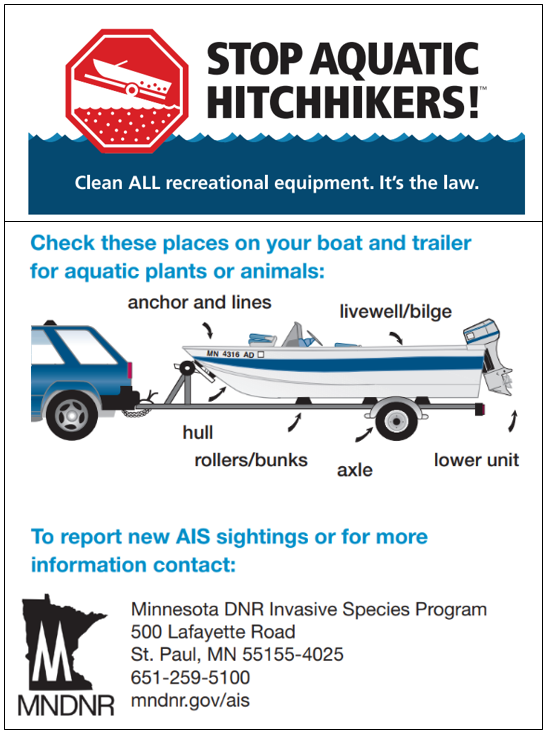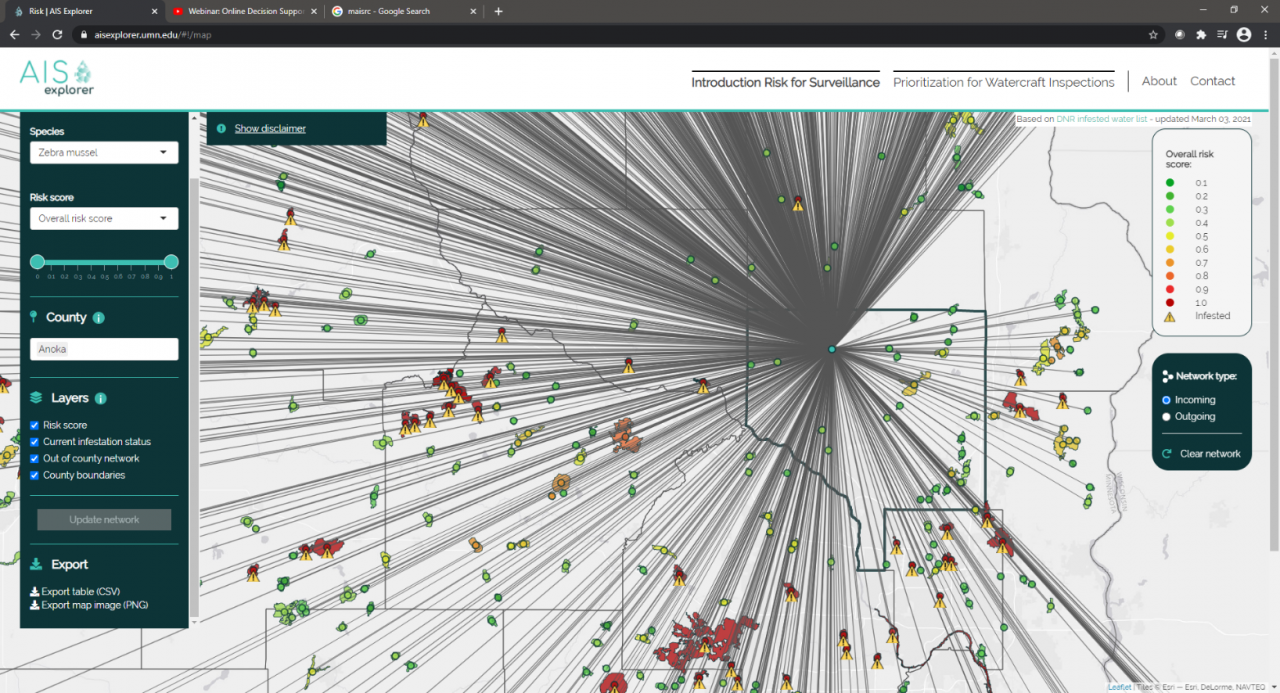For more information contact Brian Clark, Natural Resource Technician, at
Summer is coming! Warmer temperatures and fishing opener mean aquatic invasive species and MN boaters are ramping up activity on Minnesota lakes and rivers.
Do your part to prevent the spread of invasive plants and animals by cleaning, draining, and drying all recreational equipment that goes into a Minnesota lake or stream.
To help protect our lakes and rivers:
- Clean and drain boats and equipment before leaving the water access.
- Dispose of all unwanted bait, worms, and fish parts in the trash.
- Learn to recognize aquatic invasive species (AIS).
- Follow Minnesota's AIS laws and regulations.
Share this information with others who spend time fishing, boating, or recreating in Minnesota.
The MN Aquatic Invasive Species Research Center (MAISRC) of the University of MN created an interactive website that displays all of the watercraft inspector data for any lake you may be interested in. This website shows infestation status as well as the risk of infestation for most lakes across the state. It also shows all incoming and outgoing boat traffic from any lake selected based on the survey responses received by watercraft inspectors.
The website can be found at https://www.aisexplorer.umn.edu/#!/
Select your county in the left hand pane, and click the lake you are interested in viewing on the map (Lake George in Anoka County shown). Once clicking the lake, you can view infestation status and a risk score based on boat traffic data. You can also choose to view all incoming or outgoing movements from this lake. This shows where boats were reported to be either immediately prior to or after launching at Lake George. These maps and their data can also be exported directly from the website using the export tools in the left pane. This website is a great tool to view the infestation status of lakes around you, the risk that those lakes face based on data collected, and to view the data collected by the many watercraft inspectors working hard around Minnesota each year to protect our waterways.


